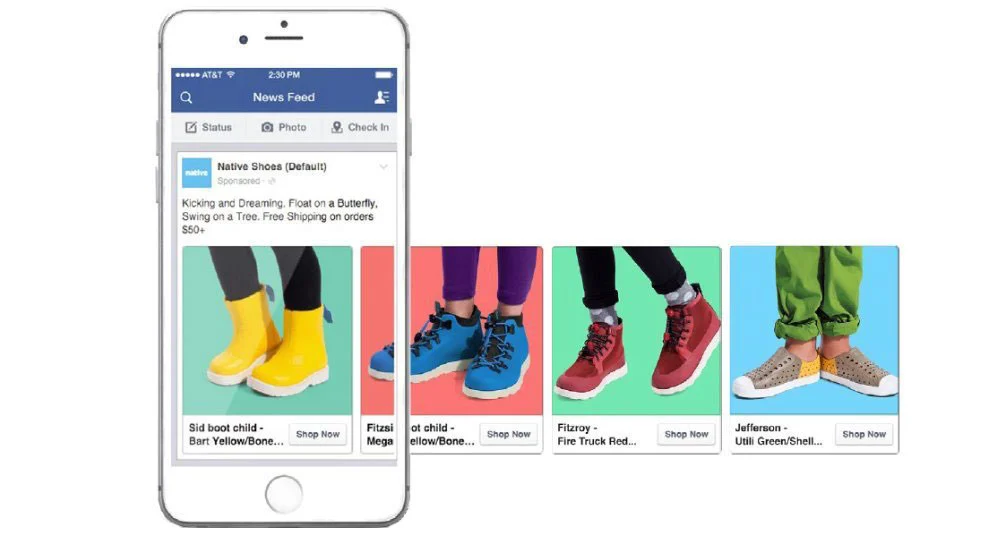
Product feed feature
A good way to increase your product’s reach and attract new visitors is to have your products posted on your favorite social media channels and on Google shopping.
If you have a lot of products on your shop (>100 products) and several social media channels, the process can be tremendous. Setting up a product feed on your shop following each channel’s guideline is the way to go. Thanks to the product feed, all your products will be automatically posted on all your channels instantly.
The entire product’s information such as product title, price, description and images are part of the data that are included in the product feed.
Implementing a product feed offers several advantages:
Firstly, it significantly increases the exposure of your products, reaching a wider audience through various channels.
Additionally, you can leverage your feed for dynamic advertising campaigns, providing personalized and targeted ads based on your product data.
Lastly, maintaining an up-to-date product feed ensures that visitors have access to accurate information, enhancing the overall shopping experience and strengthening your brand’s image.

Affiliate marketing strategy
Developing affiliate marketing strategies is an effective way of increasing the visits on your website and ultimately your sales.
So what is affiliate marketing and how does it work?
Affiliate marketing is a marketing strategy where individuals or businesses, known as affiliates, promote products on behalf of a merchant. The affiliates earn a commission for each successful referral or sale they generate through their marketing efforts.
In terms of feature, you need to develop on your e-commerce website an affiliate marketing program.
A good affiliate marketing system should include:
> Sign-up: A page where individuals/companies can register and enroll in the program.
> Promotion package: Once approved, affiliates receive links to the merchant’s shop with unique tracking codes so that the merchant can track when a sale is made thanks to the affiliate. The package should also include product information (product pictures, titles, descriptions, etc…)
> Conversion: If the customer makes a purchase, it is considered a conversion and it should be recorded accordingly. The affiliate is then eligible to receive a commission or a predetermined percentage of the sale.
> Commission payment: The merchant tracks the affiliate’s referrals and calculates the earned commissions. Ideally, payments are made on a predetermined schedule, and are automatically triggered by the system.
The affiliate marketing industry is a billion dollars industry.
According to a survey, 20% of brand marketers consider affiliate marketing to be their most crucial channel for acquiring customers, while 54% rank it among their top three channels.
This is more than the results obtained for the organic/paid search channels, which are chosen as the most crucial channels by 16% and 15% of marketers respectively.

Influencer marketing campaign
Influencer marketing is definitely another efficient way to attract new B to C customers to your e-commerce shop. But influencer marketing can be costly and generate poor results if it isn’t well targeted and if the influencer reach doesn’t match the company’s size.
However, what exactly is influencer marketing and what is the mechanism behind it?
> Influencers are individuals who have established credibility and authority in a specific niche or industry through the creation of online content. They have a loyal and engaged audience who trust their recommendations and opinions.
> Shop owners collaborate with influencers to promote their brands to a targeted audience by creating partnerships. Thanks to its authority in the specific niche, the products promoted by the influencer to his community will gain a positive image.
The objective as a company is to find an influencer who operates within the relevant niche for their products and has an online reach that aligns with the company’s investment capabilities.
In order to find the ideal fit for their marketing efforts, companies often rely on influencer matching platforms.
CreatorDB is a Taiwanese company specifically designed to facilitate this process.
From a website standpoint, you will need to develop new features:
> Develop a section in your CMS to register the influencers you work with.
> Create a unique tracking code to collect data about the visits and the revenue generated by your collaboration with each influencer.
> Ideally, Implement a dedicated section where the shop owner can conveniently access, compare, and export influencer marketing data to determine the most effective strategies.
By leveraging these features and strategies, businesses can leverage the potential of influencer marketing to drive targeted traffic, enhance brand perception, and ultimately boost their e-commerce success.
Wrap-up
In conclusion, this article series titled "Boost Online Sales" explores key strategies to increase inbound traffic and improve e-commerce performance.
The first article emphasizes three powerful and advanced e-commerce features: product feed and social media showcasing, affiliate marketing, and influencer marketing.
Implementing these features, such as using a product feed for wider exposure, establishing affiliate partnerships, and collaborating with influencers, can effectively drive targeted traffic and enhance brand perception.


